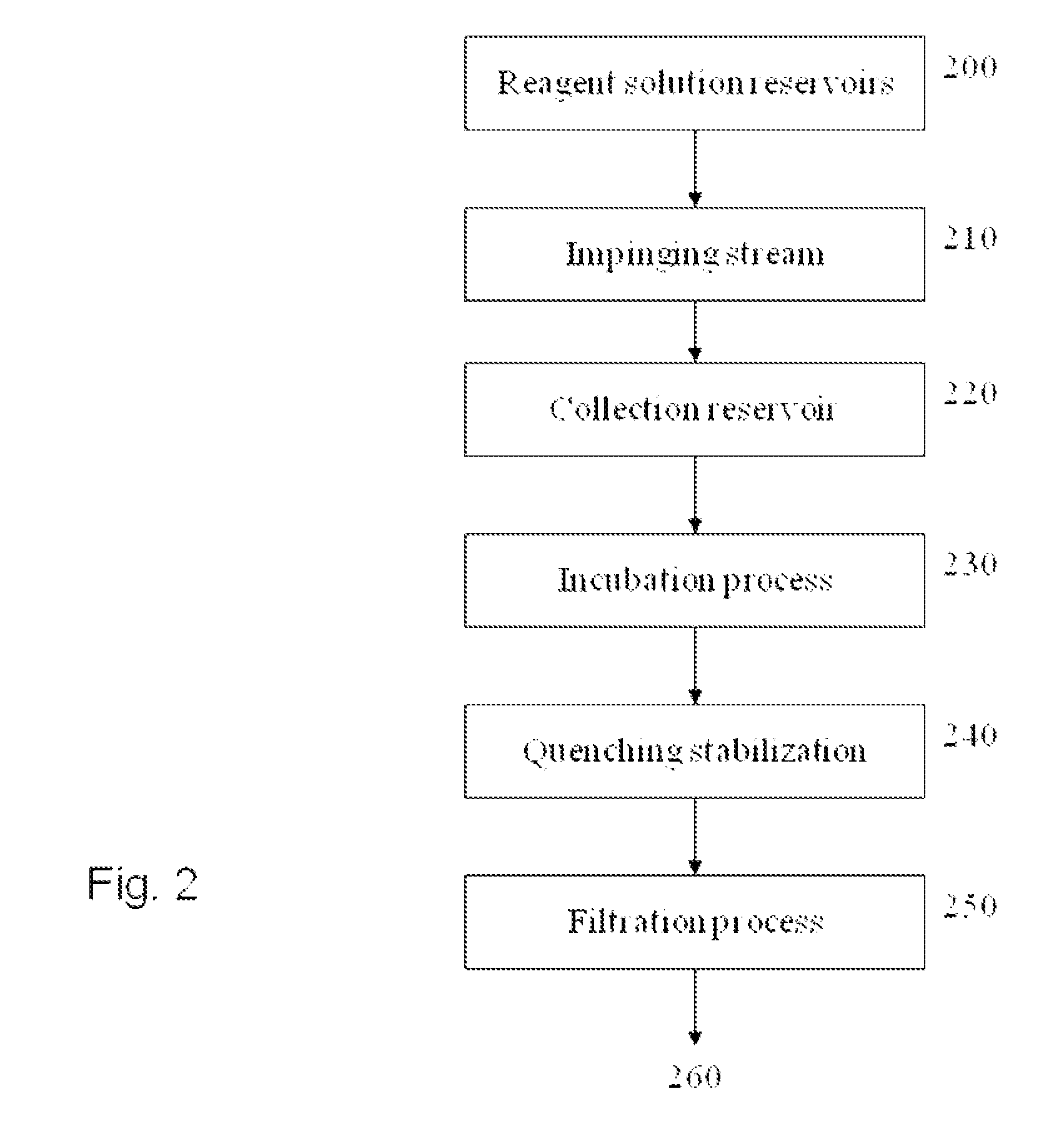Processes and Compositions for Liposomal and Efficient Delivery of Gene Silencing Therapeutics
a technology of liposomal and efficient delivery, applied in the direction of drug composition, peptide/protein ingredient, metabolic disorder, etc., can solve the problems of affecting the delivery of therapeutic compounds to subjects, affecting the delivery of therapeutic compounds, and reducing the effect of toxicity
- Summary
- Abstract
- Description
- Claims
- Application Information
AI Technical Summary
Benefits of technology
Problems solved by technology
Method used
Image
Examples
example 1
Methods for Preparing an RNA-Containing Liposomal Formulation
[0632]This example describes embodiments of methods for making an RNA-containing liposomal formulation. Some materials used in the method are summarized below:
[0633]C18:1-norArg-C16 (Palmitoyl Oleyl nor-Arginine, PONA) (MDRNA, Inc.) (formula weight 683.3)
[0634]1,2-Dimyristoyl-sn-Glycero-3-Phosphoethanolamine-N-[Methoxy(Polyethylene glycol)-2000] (Ammonium Salt) (DMPE-PEG2k) (Genzyme Pharmaceuticals, Cambridge, Mass.)
[0635]Cholesterol (Solvay Pharmaceuticals)
[0636]Cholesteryl-hemisuccinate (CHEMS) GMP (Merck Eprova AG)
[0637]Ethanol (absolute, 200 proof); Sterile water for injection
[0638]Sodium phosphate: monobasic, anhydrous, dibasic, anhydrous
[0639]Sucrose, 99+%
[0640]5 N sodium hydroxide; 2 N hydrochloric acid; Glacial acetic acid
[0641]Tromethamine (Tris) USP Grade (Research Organics)
[0642]150 mL Capacity 0.2 μm filter bottles, PES
[0643]Calibrated Rainin 20 μL, 200 μL, and 1 mL pipettors
[0644]Iso-disc filter PTFE25-10
[0645...
example 2
siRNA Liposomal Formulation
[0662]An example of a liposomal siRNA formulation embodiment of this disclosure is shown in Table 6.
TABLE 6Liposomal siRNA FormulationComponentμMMWmg / mlmg / kg doseddsRNA7.513255.40.1001.0DMPE-PEG2K38.528150.1081.1chol366.23860.1411.4CHEMS506.84860.2462.5PONA929.36830.6356.3
example 3
Effects of Physical Process Parameters on RNA-Containing Liposomal Compositions
[0663]In this example, the effects of certain process parameters for collection, incubation and quenching on the properties of siRNA liposomal compositions were observed. Compositions were prepared by using the basic protocol described in Example 1.
[0664]In each example, the active agent of the composition was a dsRNA for silencing ApoB. The liposome-forming component was an ethanol-water solution containing the DILA2 amino acid compound C18:1-norArg(NH3Cl)-C16, along with the lipids cholesteryl hemisuccinate (CHEMS, Anatrace, CH210), cholesterol (Anatrace CH200), and DMPE-PEG2k (Genzyme).
[0665]In a first example, the effects of the concentration of organic solvent at the collection step on liposome particle size and dispersity were observed as shown in Table 7. The concentration of organic solvent ethanol was calculated from flow rates and transfer tube diameters. The incubating period for each of the fo...
PUM
| Property | Measurement | Unit |
|---|---|---|
| temperature | aaaaa | aaaaa |
| temperature | aaaaa | aaaaa |
| diameter | aaaaa | aaaaa |
Abstract
Description
Claims
Application Information
 Login to View More
Login to View More - R&D
- Intellectual Property
- Life Sciences
- Materials
- Tech Scout
- Unparalleled Data Quality
- Higher Quality Content
- 60% Fewer Hallucinations
Browse by: Latest US Patents, China's latest patents, Technical Efficacy Thesaurus, Application Domain, Technology Topic, Popular Technical Reports.
© 2025 PatSnap. All rights reserved.Legal|Privacy policy|Modern Slavery Act Transparency Statement|Sitemap|About US| Contact US: help@patsnap.com



